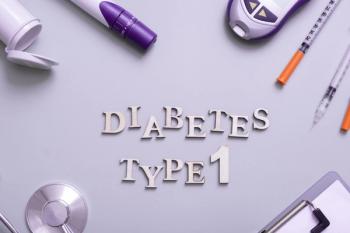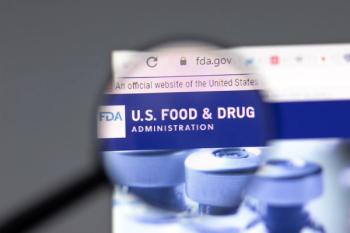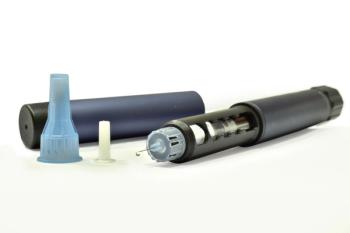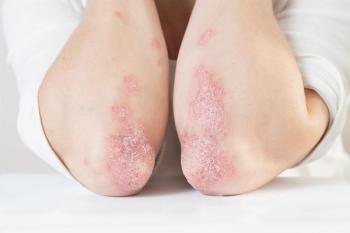
- Drug Topics February 2021
- Volume 165
- Issue 2
A Primer on Atopic Dermatitis
Pharmacists can advise patients on how to control symptoms and reduce exacerbations.
Atopic dermatitis (AD) is a chronic, inflammatory skin condition with symptoms ranging from dry, itchy skin to painful rashes that interfere with sleep and daily activities.1 It affects 1 in every 10 Americans.1 AD usually starts in early childhood; however, cases also are diagnosed in some adults.1 It is estimated that 25% of children in the United States have AD compared with 10% of adults.2 Study results have shown that African American and Asian populations are more likely to develop the disease.2 Patients with AD can develop other autoimmune conditions; for example, asthma and hay fever are reported in more than half of children with eczema.3
Pharmacists can play a major role in educating patients on how to manage flare-ups and take preventive measures. The goal of the treatment is to enhance patients’ quality of life by reducing outbreaks, controlling symptoms, and lowering the risk of infection.1
Patients should stay hydrated and apply moisturizer at least twice daily.4 Pharmacists should help patients learn to identify triggers that can cause skin irritations. Keeping a list of such triggers can help patients reduce skin flare-ups and better manage symptoms. Some triggers include stress, dry skin, detergent, fragrance, dye, and other chemicals.4
The first-line treatment for mild AD is a topical steroid (eg, hydrocortisone) that can be applied twice daily during flare-ups.4 Hydrocortisone is safe to use for patients 2 years and older. However, if symptoms have not been controlled within 7 days of treatment, seeing a dermatologist is recommended.4 Topical hydrocortisone is available over the counter at 1% strength. It can be used on almost all body areas for a short time. Oral first-generation antihistamine (eg, diphenhydramine) can help reduce itching.5
Some remedies for adults and children include the following6:
- Take a warm bath for no more than 10 minutes
- Use a mild, fragrance-free cleanser
- Pat skin gently to dry and apply petroleum jelly-based moisturizer after bathing
- Trim fingernails to avoid scratching and skin infection
- Keep room temperature at a comfortable level
Pharmacists should recommend a physician visit for moderate to severe cases of AD that involve intense itching, children younger than 1 year, infected skin, and facial flare-ups.4
If a patient’s condition is not controlled with OTC medications, a dermatologist or primary care physician can prescribe other medications to help lessen symptoms. The physician may prescribe more potent topical corticosteroids, topical calcineurin inhibitors, or crisaborole.5 Topical calcineurin inhibitors can be used on the eyelids, neck, and skin folds, whereas high-potency corticosteroids can cause skin atrophy when applied to these areas.5 Studies show that oral immunosuppressant cyclosporine may help in reducing AD symptoms, but recurrence is common after discontinuation.5
For severe cases, a dermatologist may recommend phototherapy, which includes using UV light 2 to 3 times per week for a few weeks or months.1 Another option that a physician may recommend for moderate-to-severe eczema is the wet wrap therapy. Medication is applied, then a wet dressing is worn over the area and covered with a dry dressing.5 Wet wrap therapy can help calm the skin and reduce itching and scratching.5
Patients who fail other treatments and are not qualified to receive phototherapy may be prescribed dupilumab injection.7 Dupilumab is a human monoclonal antibody inhibiting IL-4 and IL-13 that is approved to treat AD in patients aged 6 years and older.7 Some patients may consider a bleach bath to prevent flare-ups by decreasing bacteria on the skin. Patients will be instructed to add half a cup of household bleach to 40 gal of warm water.3 Then the patients will soak from the neck down or just the affected areas of the skin for about 10 minutes.4 Bleach baths should not be taken more than twice a week.3
References
- Eczema types: atopic dermatitis diagnosis and treatment. American Academy of Dermatology Association. Accessed December 19, 2020.
https://www.aad.org/public/diseases/eczema/types/atopic-dermatitis/atopic-dermatitis-treatment - Eczema types: atopic dermatitis causes. American Academy of Dermatology Association. Accessed December 19, 2020. https://www.aad.org/public/diseases/eczema/types/atopic-dermatitis/causes.
- Atopic dermatitis (eczema). Mayo Clinic. Accessed December 19, 2020.
https://www.mayoclinic.org/diseasesconditions/atopic-dermatitis-eczema/symptoms-causes/syc-20353273 - Krinsky, DL. Atopic dermatitis. Pharmacy Today. October 2019.
https://www.pharmacytoday.org/action/showPdf?pii=S1042-0991%2819%2931140-5 - Weston WL, Howe W. Treatment of atopic dermatitis (eczema). UpToDate. Updated September 24, 2020. Accessed December 20, 2020.
https://www.uptodate.com/contents/treatment-of-atopic-dermatitis-eczema - Eczema types: atopic dermatitis: tips for coping. American Academy of Dermatology Association. Accessed December 19, 2020. https://www.aad.org/public/diseases/eczema/atopic-dermatitis-coping
Articles in this issue
over 4 years ago
Community Pharmacies Can Make a Difference As Health Hubsover 4 years ago
Advocate for Your Pharmacy Staffover 4 years ago
ISMP’s Top COVID-19–Related Medication Safety Errorsover 4 years ago
Pandemic Precautions Lead to Low Incidence of Fluover 4 years ago
Pharmacy Benefit Changes Are Coming for Medi-Cal Beneficiariesover 4 years ago
Promote Immunization Services More Effectivelyalmost 5 years ago
Social Media for Your Pharmacyalmost 5 years ago
Culturally Competent Care Fights Health DisparitiesNewsletter
Pharmacy practice is always changing. Stay ahead of the curve with the Drug Topics newsletter and get the latest drug information, industry trends, and patient care tips.





















































































































































